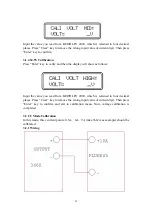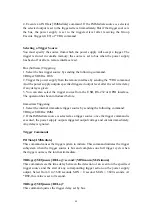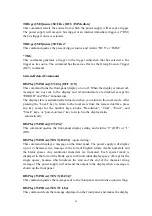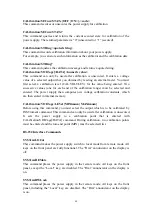
39
Using the APPLy Command
The APPLy command provides the most straightforward method to program the
power supply over the remote interface, such as to control one output or triple outputs
of power supply, and to read the immediate output value of each supply. Give the
following example to illustrate:
APPLY 3.3,2.0 Set the supply to an output of 3.3V rated at 2.0A
APLLY 12.0,0.5 Set the supply to an output of 12.0V rated at 0.5A
Using the Low-Level Commands
The main feature of the low-level commands is to provide you with more flexibility to
change or query the individual parameters than the APPLy command. Give the
following example to illustrate how to use the low-level commands to set the supply
to an output of 5.0V rated at 4.0A:
VOLT 3.3
CURR 2.0
The two commands shown in this example has the same function as the first
command shown in the above example, which shows when some individual parameter
is changed, there is no need to enter the whole setting parameters as the above
example, just enter some specified parameter.
Reading a Query Response
Only the query commands (commands that end with “?”) will instruct the power
supply to send a response message, which gives the either returned values or internal
instrument settings. Take below commands as examples to illustrate:
SYST:ERR? Query and read the error message, and return a relevant error
message
CAL:SEC:STAT? Query the calibration security, and return the relevant value
SYST:VERS? Query the system version, and return the version number
accordingly
Selecting a Trigger Source
The power supply will accept a “bus” (software) trigger or an immediate internal
trigger as a trigger source. By default, the “bus” trigger source is selected. If you want
the power supply to use an immediate internal trigger, you must select “IMMediate”.
For example:
TRIG:SOUR IMM Select an immediate internal trigger as a trigger source
















































